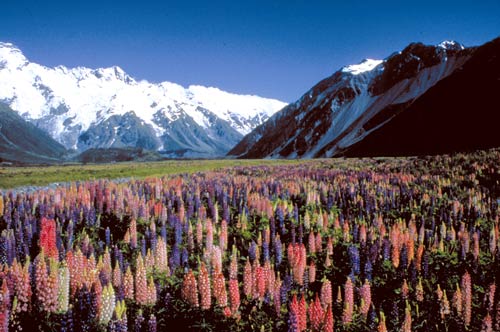
Russell lupins were introduced in the Mackenzie Basin in the 1940s from sowings or ‘garden escapees’. Although beautiful, they modify the ecosystems of braided rivers. Wading birds such as the wrybill require shallow braids to feed in. The lupins stabilise river gravels, forcing the river to form deep, rapid channels unsuitable for birds. Deep stands of lupins also shade and displace native plants, such as the woodrush. This is the lower Hooker River valley.
Using this item
Christchurch & Canterbury Tourism
This item has been provided for private study purposes (such as school projects, family and local history research) and any published reproduction (print or electronic) may infringe copyright law. It is the responsibility of the user of any material to obtain clearance from the copyright holder.












Add new comment